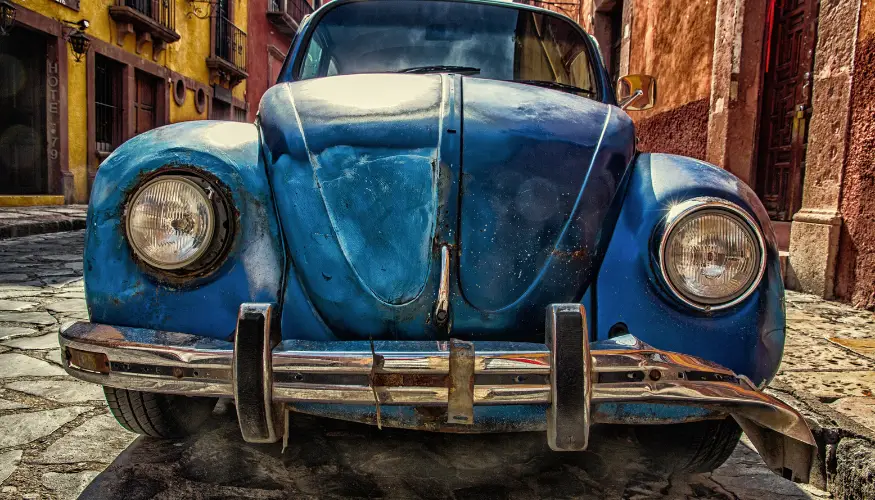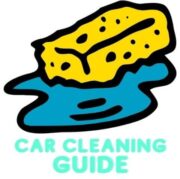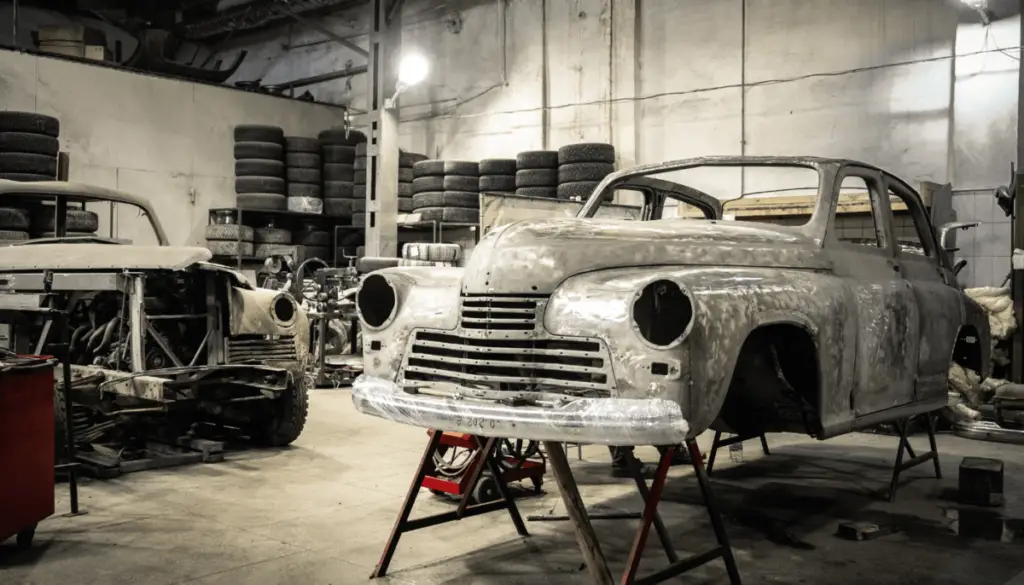- How to Clean Car Carpets Quick and Easy - July 10, 2024
- Can You Touch Up Clear Coat? Yes and No (Here’s Why) - November 25, 2023
- How To Wax A Car By Hand: A Comprehensive Guide - November 14, 2023
Last Updated on August 21, 2023 by Chase Manhattan
Quick Navigation
What Causes Paint Bubbles on Your Car?
In short, there are a few things that cause bubbling paint:
- incorrect application of the paint
- incompatibility between the paint and the surface of the car
- incorrectly prepared surfaces
- air trapped under the paint
- atmospheric humidity
- damaged paint surfaces
- cold or humid conditions
The longer version:
One of the most common causes of bubbling car paint is moisture. When water or moisture gets trapped between the layers of paint, it can cause the paint to bubble and peel. This can happen if the car is not properly dried after washing or if it is exposed to poor weather conditions like rain or humidity. Additionally, if the car was not properly prepped before painting, water vapour penetrates the new layer of paint and cause bubbles to form.
Another cause of paint bubbles on your car is improper application of paint. If too much paint is applied too thickly or unevenly, it can cause bubbles or air pockets to form as the paint dries. This can also happen if the paint is not allowed to dry completely between coats. Additionally, if the surface of the car was not properly cleaned and sanded before painting, or a cheap quality thinner was used, this can also cause subsequent blistering.
[What Is Clear Coat, and What Does It Do?]Lastly, exposure to adverse environmental conditions can also cause paint bubbles on your car. If the car is exposed to high temperatures, such as being parked in direct sunlight for extended periods of time, it can cause the paint to expand and contract, leading to the paint structure being compromised. On the other hand, exposure to very low temperatures can cause the paint to contract too much, which can also lead to bubbles forming. It’s important to keep your car protected from inclement weather conditions as much as possible to prevent this from happening.

How to Identify Blistering Car Paint on Your Car
To identify paint bubbling on your car, you should first look for areas where the paint appears raised or uneven. Bubbles can appear in small clusters or cover larger areas of the car’s surface. They may also be accompanied by cracking or flaking paint. Another telltale sign of paint blisters is discoloration or fading around the affected area. It’s important to address cars developing moisture blistering as soon as possible to prevent further damage.
One common cause of paint bubbling on cars is moisture. Water can seep into small cracks or imperfections in the paint and cause it to bubble up. This is especially common in areas where there is a lot of humidity or moisture, such as near the coast or during rainy seasons. Another potential cause of blistering paint is exposure to poor weather conditions coupled with extreme temperatures. If your car is exposed to high heat or direct sunlight for extended periods of time, it can cause the paint to expand and contract, leading to damage and the subsequent risk of bubbling car paint.
If you notice paint bubbling on your car, it’s important to take action right away. Ignoring the blistered paint can lead to further damage and potentially rusting of the underlying metal. Depending on the severity of the issue, you may need to have the underlying surface sanded down and the whole paint process redone by a body shop professional. In some cases, simply addressing any underlying moisture issues and applying a coat of sealant can help prevent future bubbles from forming.
[How To Wax Car With A Buffer]
The Dangers of Ignoring Car Paint Bubbling
The presence of paint bubbles on a car may seem like a minor issue, but it can actually lead to serious consequences if ignored. Paint bubbles are typically caused by moisture getting trapped underneath the paint surface, which can cause the paint to lift and bubble up. If left untreated, the possible subsequent blistering will continue to grow and eventually lead to more serious issues such as rust and corrosion as atmospheric humidity will create water vapour under the surface.
Rust is one of the most common problems associated with ignoring car paint blistering. As the paint continues to bubble and lift, it exposes the bare metal underneath to moisture and other environmental elements. Over time, this can cause rust to form, which can eat away at the metal and weaken the structural integrity of the car. Rust can also spread quickly, making it difficult and expensive to repair.
[How To Stop Rust Bubbles From Spreading On Your Car]
In addition to rust, ignoring paint blistering can also lead to cosmetic issues such as discoloration and peeling. As the bubbles continue to grow, they can cause the surrounding paint to crack and peel off. This not only looks unsightly but can also make it difficult to sell or trade in your car in the future. To avoid these issues, it’s important to fix bubbling paint as soon as they are detected and have them repaired by a professional automotive painter.
Preventative Measures to Avoid Car Paint Bubbling
One of the most effective preventative measures to avoid bubbling paint on a car is to ensure that the vehicle is properly cleaned and prepared before painting. A thorough cleaning includes washing the car thoroughly to remove any dirt or grime, sanding down any rough spots, dried paint, or imperfections, and applying a sufficient primer coat to help the paint adhere properly. Failure to properly prepare the surface can lead to trapped moisture or contaminants that can cause bubbles to form in the paint.
Otherwise, it’s recommended to wax your car frequently because one of the benefits of waxing your car is to prevent bubbling and other wear in the car’s paint job.
Another important preventative measure is to use high-quality paint and materials. Using cheap or low-quality products can lead to uneven coverage, poor adhesion, and ultimately, paint blistering. It’s important to invest in quality paints and materials that are designed specifically for automotive use in order to achieve a smooth, even finish that will resist bubbling.
[WD40 for Cars Displaces Moisture]
Finally, it’s important to follow proper painting techniques and allow adequate drying time between coats. Rushing the painting process or failing to allow each coat of paint to fully dry can cause bubbles to form as moisture becomes trapped between layers. Taking the time to properly prepare the surface, use quality materials, and follow proper painting techniques can help prevent paint bubbles and ensure a flawless finish on your car.
FAQs
Does Paint Film Prevent Bubbling Paint
Paint film like PPF (paint protection film) can help prevent bubbling car paint because it protects the car’s clear coat from environmental factors like rain moisture and UV ray exposure.
[What Is Paint Protection Film]
[Pros and Cons of Paint Protection Film]
Why Is My Fresh Paint Work Blistering
This can have many factors to do with the body shop that applied your paint. Factors including:
- workshop temperature
- technician rushed, has too many jobs
- sufficient primer film not applied

